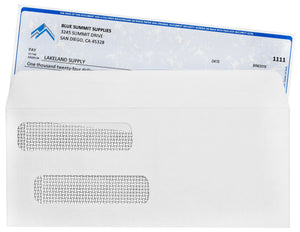There are a lot of customer service acronyms out there and a lot of other words for customer service. But what do they all mean?
Most of the acronyms you’ll encounter contain roughly the same key attributes of customer service. The acronyms offer a simple way to remember the steps to providing a great customer experience, so your customer service team can manage any issues with patience, thoughtfulness, and empathy.
Learn more about customer service acronyms, including what some of the most popular acronyms mean and how they are used to improve the customer experience.
Customer Service Acronyms, Explained
The following customer service acronyms all have the same essential intention: providing teams with an easy-to-remember method of delivering a great customer service experience that delights customers and keeps them coming back for more.

HEART Acronym Customer Service Meaning
H.E.A.R.T stands for Hear, Empathize, Apologize, Respond, Thank. It is an acronym used in the customer service industry to help those dealing with customer concerns navigate an effective response.
Hear: Listen to what the customer is saying, and do not interrupt. If they are extremely frustrated, interjecting or correcting them will only exacerbate the problem. You can’t fix the problem if you don’t pay attention to the details.
Empathize: Put yourself in the customer’s shoes and let them know you understand how frustrating the situation is for them. Is it something you’ve been through too?
Apologize: A sincere apology can go a long way toward soothing someone’s feelings of anger or frustration.
Respond: Now is the time to solve the problem. If it can’t be solved right away, let them know that you are starting the process immediately. Set expectations. If it’s something you need to look into, let them know when you will get back to them with an answer.
Thank: Thank the customer for bringing the problem to your attention and for using your product or service. After all, they could have chosen to simply leave a negative review and never use your business again. They took the time to give you a chance to fix the issue and change their customer experience for the better.

LAST Acronym Customer Service Meaning
L.A.S.T stands for Listen, Apologize, Solve, Thank. It’s an easy-to-remember acronym your team can use when faced with a customer service issue.
Listen: Make sure you hear the customer clearly. Repeat the concern or grievance back to them to demonstrate you have heard them correctly.
Apologize: Apologize sincerely. Acknowledge the customer’s inconvenience and discomfort, and put yourself in their shoes. How much would this frustrate you in their position? Communicate your happiness to help them solve the problem.
Solve: Find the solution. If the problem can’t be solved right away, take the necessary steps to ensure it will be solved soon, and get the process underway immediately.
Thank: Say thank you! Thank the customer for bringing the problem to your attention, and note how much you appreciate them for using your product or service.

CARES Acronym Customer Service Meaning
C.A.R.E.S stands for Communication, Accountability, Responsiveness, Empathy, Solution. The acronym outlines the key elements and attributes of quality customer service. It can be used to help customer service reps navigate customer concerns.
Communication: Communicate the process clearly and set expectations. How long will the process take? What are the necessary steps? Will there be a cost involved?
Accountability: Take responsibility. Commit to solving the problem and finding the answer.
Responsiveness: Never make the customer wait. Be attentive to their needs and maintain steady communication. If the situation is taking time to remedy, check in with them frequently.
Empathy: Recognize the inconvenience the issue has caused them. Apologize for the problem, and acknowledge how frustrated you would be in their shoes. Tell them how happy you are to help them solve this issue.
Solution: Find the solution or the answer to the question. When it comes down to it, this is the most important step.

ACES Acronym Customer Service Meaning
A.C.E.S stands for Accountability, Communication, Empathy, Solution. The acronym outlines four key elements of great customer service. Companies should design their customer service interactions around the following key characteristics.
Accountability: Take responsibility for solving the problem or finding the answer.
Communication: Communicate the steps of the process and set expectations. Tell the customer how long the process will take, and be upfront about any costs involved.
Empathy: Acknowledge the customer’s inconvenience and how much the situation has put them out. Apologize sincerely for the issue, and let them know how happy you are to help.
Solution: Find the solution or answer to the problem

WOW Acronym Customer Service Meaning
WOW isn’t actually an acronym; it refers to the WOW factor in customer service. It’s a method of delivering an incredible customer service experience and pleasant surprise that differentiates you from other companies—making your customers go, “WOW! Now that’s amazing service!”
WOW prizes emotional intelligence, empathy, enthusiasm, and thoughtfulness. What feeling or emotion do you want to leave the customer with? WOW doesn’t settle for the status quo. It’s going above and beyond to deliver service that customers will tell their friends and family about. “Larry from Blue Summit was SO kind and understanding. She was SUCH a good girl!” 🐶😊
Delivering this kind of experience converts potential customers and drives brand loyalty.

SMILE Acronym Customer Service Meaning
The customer service acronym SMILE is similar to WOW in that it’s not actually a set-in-stone acronym. But there’s a good reason you’ll see the words customer service and smile used together, and it’s because the act of smiling is one of the most important factors in providing good customer service.
After all, actions speak louder than words, and a smile is one of the easiest ways to communicate that we’re sincere.
Smiling doesn’t only trigger a happiness response in the customer. Science says that just the act of smiling can lift your mood, lower stress, and boost your immune system. Even if you don’t feel like smiling, faking a smile sparks the same chemical reaction in your brain as a genuine smile, so your happy hormones dopamine and serotonin are released anyway.
If you’re dealing with a particularly negative customer or your long day is beginning to zap your energy, force a smile. Faking it will keep you from becoming overly frustrated or agitated, so you can focus on delivering great customer service.

Other Common Customer Service Acronyms
- AHT stands for average handle time—in other words, a metric for how long it usually takes to solve a customer ticket.
- CEM stands for Customer Experience Management.
- CRM stands for Customer Relationship Management.
- CRO stands for Conversion Rate Optimization.
- CSAT stands for Customer Satisfaction Score.
- CSS stands for Customer Self-Service—in other words, customer support centered around giving the customer the information they need to solve the problem themselves.
- FCR stands for First Contact Resolution
- HR stands for Human Resources.
- KPI stands for Key Performance Indicators.
- ROI stands for Return on Investment.
- SMB stands for Small and Medium-sized Businesses.
- QA stands for Quality Assurance.
- UX stands for User Experience.
- WOM stands for Word of Mouth.

Other Terms for Customer Service
When speaking about customer service itself, there are plenty of other terms and acronyms that are sometimes used interchangeably. Some of the terms have the same meaning, while others describe a slightly different aspect of the customer service industry.
- CS
- Customer care
- Customer experience
- Customer focus
- Customer support
- Client service
- Product service
- Troubleshooting
- After-sales service

What is the Customer Service Abbreviation?
The abbreviation for customer service is CS. In other industries, the abbreviation CS can also denote:
- Computer Science
- Computer Studies
- Computer Service
- Computer Support
- Communications Services
- Creative Suite (Adobe)
- Czechoslovakia (.cs)
- Common Sense
- Control System
- Cache Size
- Cesium (chemical element)

Customer Service vs. Customer Experience
The difference between customer service and customer experience is subtle but important.
Customer service is the support you provide a customer throughout their entire interaction with your business—before, during, and after they purchase or use your product or service. Good customer service, such as being polite, contrite, warm, professional, attentive, and quick, results in a good customer experience.
Customer experience is the overall perception customers have of your brand or business. It takes into account every step of the customer journey. If a customer loves your product but has had even one unpleasant experience with your customer service, it’s going to negatively impact their experience and overall impression of your brand, and vice versa.
Customer experience won’t affect your customer service, but your customer service will affect the customer experience.
More from Blue Summit Supplies
💡 Coworker vs. Colleague: What’s the Difference?
💡 Office Manager vs. Administrative Assistant: What Does an Office Manager Do?
Do you love office talk as much as we do? Follow our office supplies blog for the latest trends, office strategies, product comparisons, and more.
If you have any questions or want to talk to someone about office supplies, email us or connect on Twitter, Facebook, or Instagram.
 For more informative articles about office supplies, subscribe to our email newsletter!
For more informative articles about office supplies, subscribe to our email newsletter!
Never fear, you won't begin receiving daily sales emails that belong in a spam folder. Instead, we promise a fun weekly roundup of our latest blog posts and great finds from across the web. And if you lose interest, it's always easy to unsubscribe with a single click.










